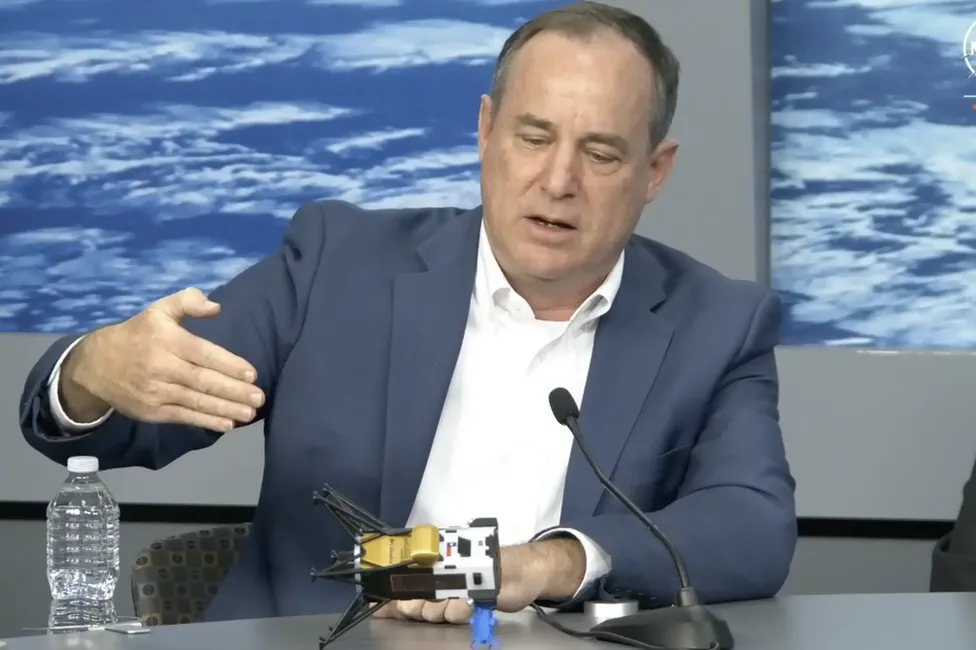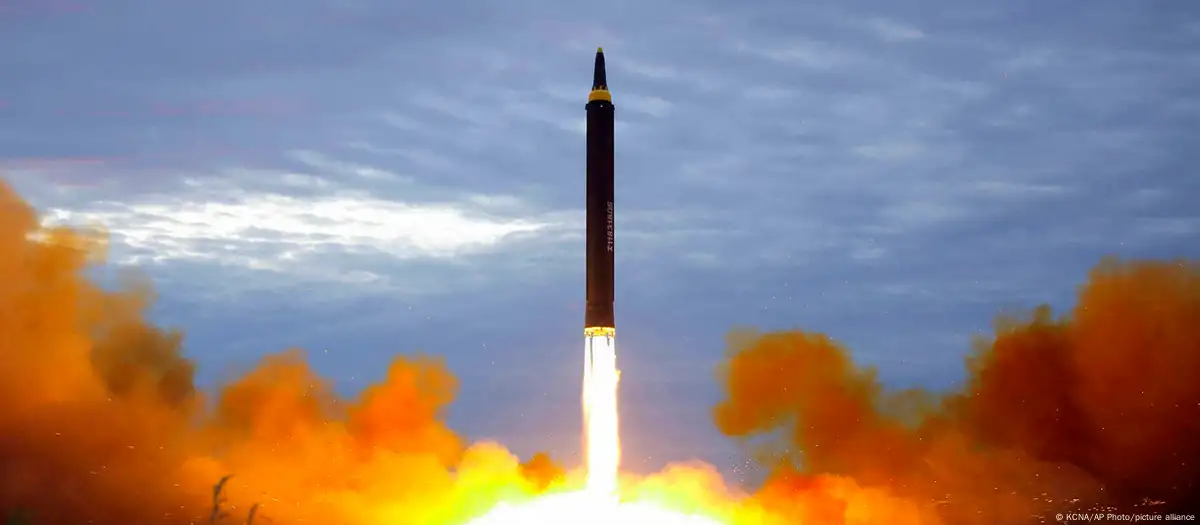Intuitive Machines: Odysseus Moon lander 'tipped over on touchdown'
The Odysseus Moon lander is likely lying on its side with its head resting against a rock.

The US spacecraft, which made history on Thursday by becoming the first ever privately built and operated robot to complete a soft lunar touchdown, is otherwise in good condition.
Its owner, Texan firm Intuitive Machines, says Odysseus has plenty of power and is communicating with Earth.
Controllers are trying to retrieve pictures from the robot.
Steve Altemus, the CEO and co-founder of IM, said it wasn't totally clear what had happened but the data suggested the robot caught a foot on the surface and then fell because it still had some lateral motion at the moment of landing.
Another possibility is that Odysseus broke a leg as it came down. Certainly, inertial measurement sensors indicate the body of the vehicle to be in a horizontal pose.
Whatever the reason for the unexpected landed configuration, radio antennas are still pointing at Earth and solar cells continue to collect energy to charge the battery system.
Fortuitously, all the scientific instruments that planned to take observations on the Moon are on the side of Odysseus facing up, which should allow them to do some work. The only payload on the "wrong side" of the lander, pointing down at the lunar surface, is a static art project.
"We're hopeful to get pictures and really do an assessment of the structure and assessment of all the external equipment," Mr Altemus told reporters.
"So far, we have quite a bit of operational capability even though we're tipped over. And so that's really exciting for us, and we are continuing the surface operations mission as a result of it."
The robot had been directed to a cratered terrain near the Moon's south pole, and the IM team believes it got very close to the targeted site, perhaps within 2km or 3km.
A US space agency satellite called the Lunar Reconnaissance Orbiter will search for Odysseus this weekend to confirm its whereabouts.
The IM mission is part of Nasa's Commercial Lunar Payload Services (CLPS) programme, in which the agency is paying various private American companies for cargo services to the Moon - in the case of Odysseus with a fee of $118M (£93m).
All the companies are responsible for the financing, build, launch and operation of their spacecraft - and for finding commercial payloads to supplement Nasa's.
Six CLPS missions were planned for this year. The first, by Pittsburgh-based firm Astrobotic, ended in failure. Its Peregrine lander developed technical problems en route to the Moon and gave up the opportunity of a touchdown. The robot was brought back to burn up in Earth's atmosphere.
Intuitive Machines has two further missions in prospect for 2024. The next will see a robot drill into the surface. Another Texan company, Firefly Aerospace, should also shoot for the Moon at some point in the coming months.
Nasa regards the CLPS approach as a more economical way of getting its science done, while at the same time seeding what it hopes will become a thriving lunar economy.
Joel Kearns, from the agency's science mission directorate, described the Odysseus landing as a "gigantic accomplishment", and an affirmation of the CLPS policy.
Irrespective of its current functionality, Odysseus is unlikely to work much beyond the beginning of March when darkness will fall on the landing site.
"Once the Sun sets on 'Oddie', the batteries will attempt to keep the vehicle warm and alive but eventually it'll fall into a deep cold and then the electronics that we produce just won't survive the deep cold of lunar night. And so, best case scenario, we're looking at another nine to 10 days (of operations)," said Tim Crain, IM's CTO and co-founder.
-bbc






